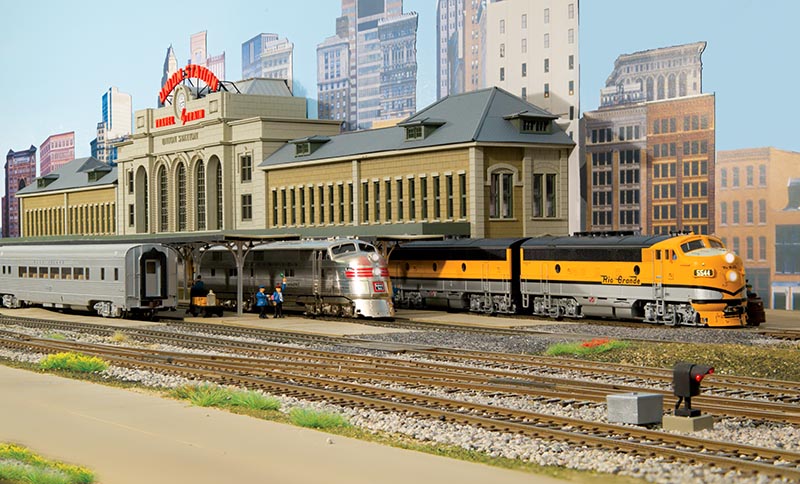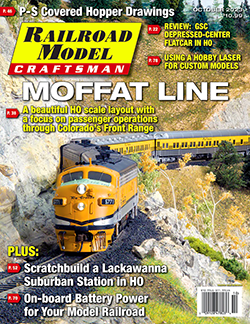 by Dan Munson/photos by the author
by Dan Munson/photos by the author
With roots dating back to the 1870s, Denver & Rio Grande Western connected the cities of eastern Colorado with the Salt Lake City gateway in Utah. The railroad’s slogan was, “Through the Rockies, Not Around Them,” and anyone who’s taken the ride between Denver and Grand Junction, or spent time railfanning this section of the railroad, knows this to be true. The Rio Grande’s dramatic climb out of Denver into the Rockies is legendary. The climb starts only a few miles out of North Yard in Denver and passes through 29 bores before reaching the six-mile Moffat Tunnel, near the summit of the two-percent ruling grade.
Because of the treacherous mountain grades, Rio Grande operated short, fast freight trains that powered up and over the peaks at the maximum allowed speed, using a powerful fleet of EMD diesels in the modern era. While the advent of Amtrak and industry deregulation would bring sweeping changes in the 1970s, Rio Grande embraced tradition and continued operating the Rio Grande Zephyr streamliner between Denver and Ogden well into the 1980s. These factors, coupled with the unsurpassed mountain scenery of the Colorado Rockies, leave no wonder why Rob Biddison chose the Rio Grande.
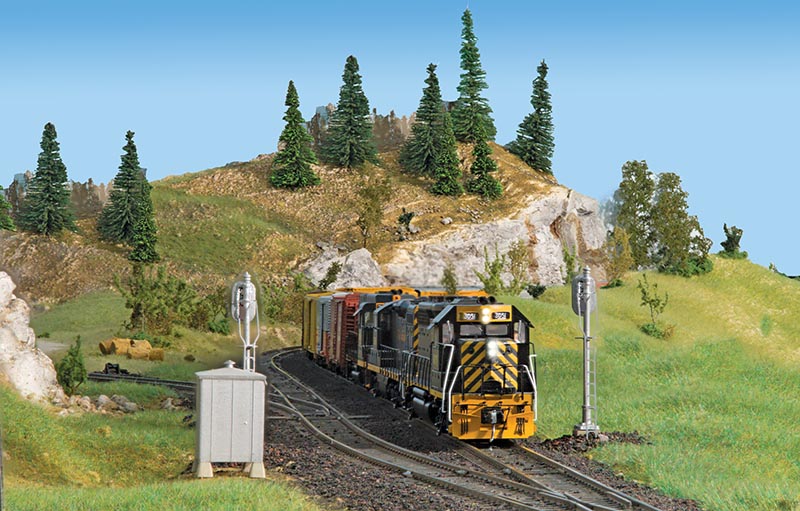
ABOVE: A Rio Grande GP40 leads two other EMDs on a westbound freight, as they climb the Front Range passing the siding at Rocky.
According to Rob, trains and model railroading have always been a part of his life. Growing up in a suburb of Balitmore, Md., he got his start at a young age. Every year around Christmas, his grandfather would bring out the “platform,” as he called it, to set up the Lionel trains. Believe it or not, it was a double-deck setup using all thread rods with nuts and bolts. He kept the platform in pieces out in the garage in the rafters when it was not used. Amazingly, it didn’t take long to set up and have trains running — or so it seemed! The layout had structures, tunnels, and switch tracks. Equipment like the animated milk car that would unload the barrels of milk onto a platform added to the fun. They would run the trains for hours and hours. Rob has many fond memories from this time, and still has the Lionel trains in his collection.
Around the same time, Rob’s dad built a large L-shaped HO scale layout that was detailed with a roundhouse, turntable, and overhead catenary, inspired by the Pennsylvania Railroad lines that ran through Baltimore. Rob remembers the GG1 electric locomotive that ran off the catenary, and the Pacific Fast Mail sound system that added life to his father’s layout. The realistic look of the HO scale models made an impression on Rob.
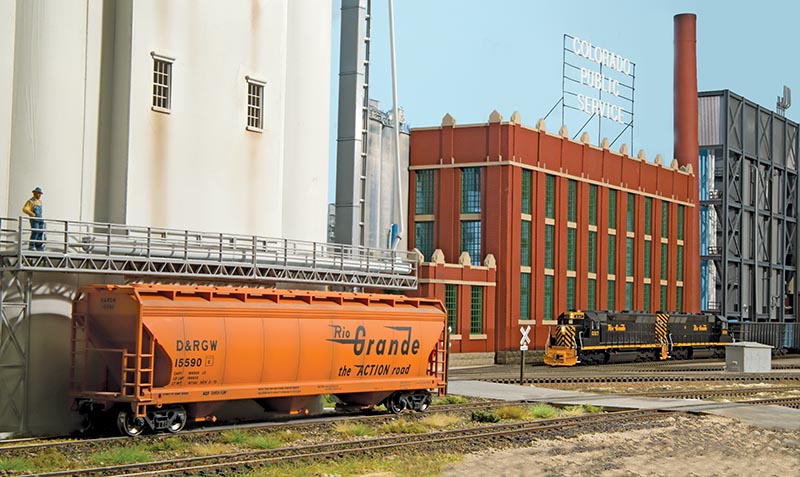
ABOVE: A pair of Rio Grande SD45s have just finished shoving a loaded coal train into the Colorado Public Service power plant in Denver. In the foreground, a D&RGW covered hopper is being unloaded at the Pillsbury plant.
Growing up, Rob spent a lot of time railfanning with his dad and grandfather. They would take him down to the Baltimore & Ohio yards so they could watch trains being switched, and there were several nearby locations they would sit and watch trains pass while enjoying a packed lunch. Rob’s uncle Tony had a house that was right on the four-track Penn Central (ex-PRR) main line (now known as the Northeast Corridor) in Baltimore. Rob was amazed by all the railroad activity on this busy line. He fondly remembers standing at his uncle’s fence, waving as passing engineers returned his greeting with friendly horn blasts. Rob received a gift of a Tyco train set one Christmas, and the rest was history. With all these strong early influences, it’s not surprising that Rob became a railfan and a model railroader. What is surprising is why he didn’t end up modeling an Eastern road.
Grande Plans
Rob built several HO scale layouts over the years, mostly inspired by Eastern and Midwestern roads. Then, in 1975, his family relocated from the East Coast to the Denver area, and Rob got to witness firsthand the mighty Rio Grande. Railroading would never be the same for him.
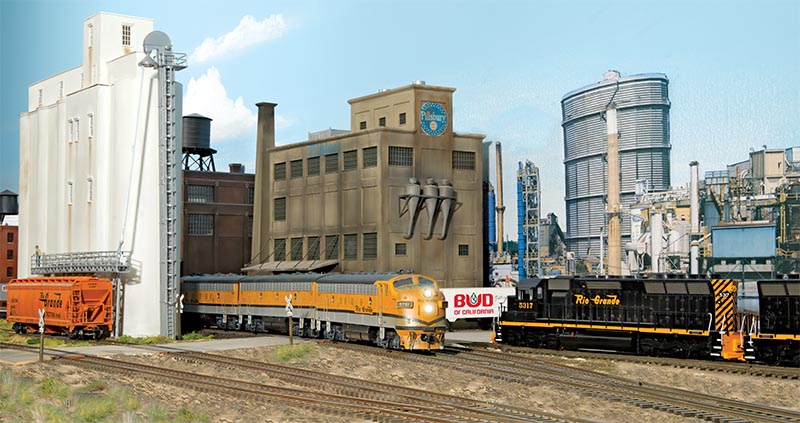
ABOVE: An A-B-A set of EMD F7s brings an eastbound freight off the Front Range and through the Belt Line, heading toward Denver North Yard, as they pass a pair of new SD45s handling a coal load into the Colorado Public Service power plant.
Fast-forward several years and Rob found the opportunity to build his dream layout in his home in suburban Kansas City. The basement was a blank slate, which was finished off to include a dedicated workshop, dispatcher’s office, and bathroom. With the help of some friends, layout construction began in February 2007.
Rob chose a linear design with benchwork cantilevered off the walls, so that there are no legs to get in the way. As part of the design, he had to put up two additional walls. While the width of the benchwork varies around the railroad, it is no more than 36” at its widest point, so that most operators can reach across…


